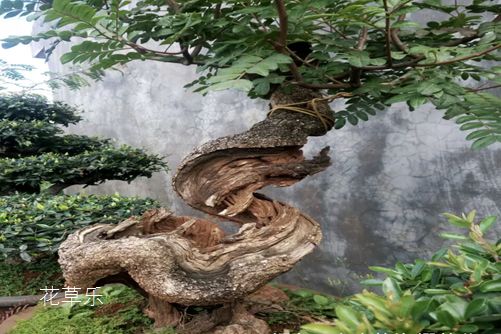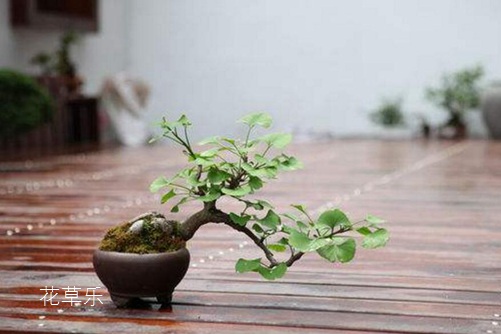How to grow potted lemons? make these points to make your potted lemons hang fruit all over the branches.
Lemon is also known as lemon, foreign lemon, motherfruit and so on. Small trees, with fewer thorns on branches. The lemon fruit is oval and yellow, and the juice is very sour. The flowering period of lemon is from April to May and the ripening period of fruit is from September to November. Because the taste of lemon is very sour, pregnant women like to eat it very much, which is called motherwort. Lemon juice is fleshy and crispy, the smell is very fragrant, the taste is very sour, and it is also a good seasoning. With such advantages, do you want to plant a potted lemon at home? Pick one on a potted plant when you want it. How to grow potted lemons? In fact, it is very simple to share the cultivation methods and precautions of potted lemon with you.
How to grow potted lemons? Culture methods and matters needing attention of potted lemon

Fruit potted plants need to absorb more nutrients than ordinary green potted plants, so choose a slightly larger purple sand basin and try to choose thicker, more shaped lemon trees. The matters needing attention in the process of culture are as follows:
1. Light and temperature: lemon likes light, and the best growth temperature is from 23 ℃ to 29 ℃. If the temperature is over 35 ℃, the growth will stop. If the temperature is lower than-2 ℃, the leaves will turn yellow. Lemon potted winter needs to be moved into the room before Frosts Descent, and then moved out of the room after the Qingming Festival, so as to ensure the safety of the winter.
2. Change the basin soil on time: the time is generally after Ching Ming Festival and before April. When changing the basin, you should choose a basin suitable for the growth of lemon plant size, not too big or too small, and add base fertilizer to the bottom of the basin, such as chicken dung, cake fertilizer and so on.
3. Timely fertilization: potted lemons apply multi-element flower fertilizer every other month before flowering and after hanging fruit, and spray flower nutrient solution every half a month. To apply a proper amount of fertilizer according to the growth trend, large plants can apply more fertilizer and less fertilizer in small pots.
4. Pest control: lemon has strong resistance to diseases and insect pests, dry climate and fewer diseases and insect pests. The prevention of diseases and insect pests should be given priority to. In the cultivation and management, the branches and leaves should be cleaned by spraying water, and the branches and leaves should be pruned and well ventilated and transparent. Carbendazim is usually sprayed every half a month.
5, timely pruning: lemon pruning is mainly in winter and spring, cutting off withered branches and fallen leaves, diseases and insect pests, growing branches and other parts, so that the plant can hang fruit and grow. Pruning during the growing period is supplementary. When the tree is just bearing fruit, the tree pruning is mainly light and long. Through shaping and pruning, we can adjust the rational distribution of nutrients in the tree, so that the limited nutrients are concentrated to supply buds and leaves, forming more fruiting branches, so as to achieve full branches of flowers and fruits. Potted lemon must be pruned before spring shoot germination. firstly, withered branches, diseased branches, overgrown branches, introverted branches, cross branches, sprouting branches and so on should be removed. Leave 4 or 5 full buds for strong branches and 2 or 3 buds for weak branches to promote more robust spring shoots on each branch. After the spring shoot grows evenly, in order to control its overgrowth, light cutting can be carried out to cut off 3 or 4 nodes of the shoot. The new shoots will be plucked when there are 6-8 knots, in order to induce more summer shoots.
Second, how to cultivate potted lemons in order to hang more fruits
If the potted lemon is not well managed, the result is only flowering, no fruit or little fruit, no blossom. How can we make potted lemons fruitful year after year? The following Huacao Le tells you to pay attention to the following three points:
1. Water control before flowering in order to prevent overgrowth of summer shoots, the water supply to potted lemons decreased gradually in the first ten days of the End of Heat, and stopped in the first 5 days until the leaves were withered and curled. In order to prevent leaf dehydration, water can be sprayed on the leaf surface in the morning and evening, so that the lemon is under the condition of drought and not dying, its axillary buds are expanding day by day, and the bud color changes from green to white. When it is found that most of the axillary buds change from green to white, controlling water to promote flowers is successful. After that, the watering will resume normally.
2. Fertilization is very important. After lemon blossoms, thinning flowers and fruits should be carried out in addition to applying thin fertilizer once a week. Before the flowers bloom, first remove part of the buds; after the flowers are shedding and setting fruit, and then remove some improperly positioned young fruits, so that nutrients are concentrated on the retained flowers and fruits, so that the fruits grow bigger and better. During the fruit growth period, if there is enough fertilizer and water, the plant branches will sprout new shoots. In order to preserve the fruit, the new shoots should be erased in time. When the fruit is yellow and ripe, stop fertilizing and reduce watering to keep the soil moist and slightly dry to increase the fruit setting rate.
3. Heart-picking, fruit-picking and potted lemon like fertilizer, and thin fertilizer should be applied on weekdays. Once the mature liquid fertilizer is applied before sprouting, and then once a week, only the branches and leaves will grow and there will be more spring shoots. After picking the heart every time, it is necessary to apply fertilizer in time to make the branches mature earlier. During the growth of lemon, you can sprinkle some cake fertilizer on the basin, and after watering, the fertilizer seeps into the soil to enhance fertility. After entering autumn, fertilization is reduced to avoid overnutrition of plants, promote autumn shoots, and compete with fruits for nutrients, resulting in fruit drop.
Time: 2019-04-23 Click:
- Prev

How to raise fragrant wood? So that the aroma overflowed and even the mosquitoes dared not fly into the yard.
Fragrant wood can also be called incense leaf, fine leaf, regular wood, Lacqueraceae Coptis shrub or small tree mosquito repellent plant, which mainly grows in the dry and hot valleys of central and northern Yunnan and Sichuan, Guizhou and southwestern Guangxi. The fragrance of wood is faint and relaxing, and the leaves are green and fine.
- Next

How to raise potted ginkgo biloba? Introduction to potted planting and maintenance methods of Ginkgo biloba
Ginkgo trees are ancient and elegant, with fan-shaped leaves, green new leaves in spring and golden old leaves in autumn. It is an ancient and unique valuable tree species in China. The Chronicles of long things written by Wen Zhenheng in the Ming Dynasty recorded that the branches and leaves of Ginkgo biloba were sparse, and it was the cutest when it was new green. The old pile and new leaves in the pot scion are the most ornamental. Ginkgo biloba grows slowly and has a long life span.
Related
- Fuxing push coffee new agricultural production and marketing class: lack of small-scale processing plants
- Jujube rice field leisure farm deep ploughing Yilan for five years to create a space for organic food and play
- Nongyu Farm-A trial of organic papaya for brave women with advanced technology
- Four points for attention in the prevention and control of diseases and insect pests of edible fungi
- How to add nutrient solution to Edible Fungi
- Is there any good way to control edible fungus mites?
- Open Inoculation Technology of Edible Fungi
- Is there any clever way to use fertilizer for edible fungus in winter?
- What agents are used to kill the pathogens of edible fungi in the mushroom shed?
- Rapid drying of Edible Fungi

